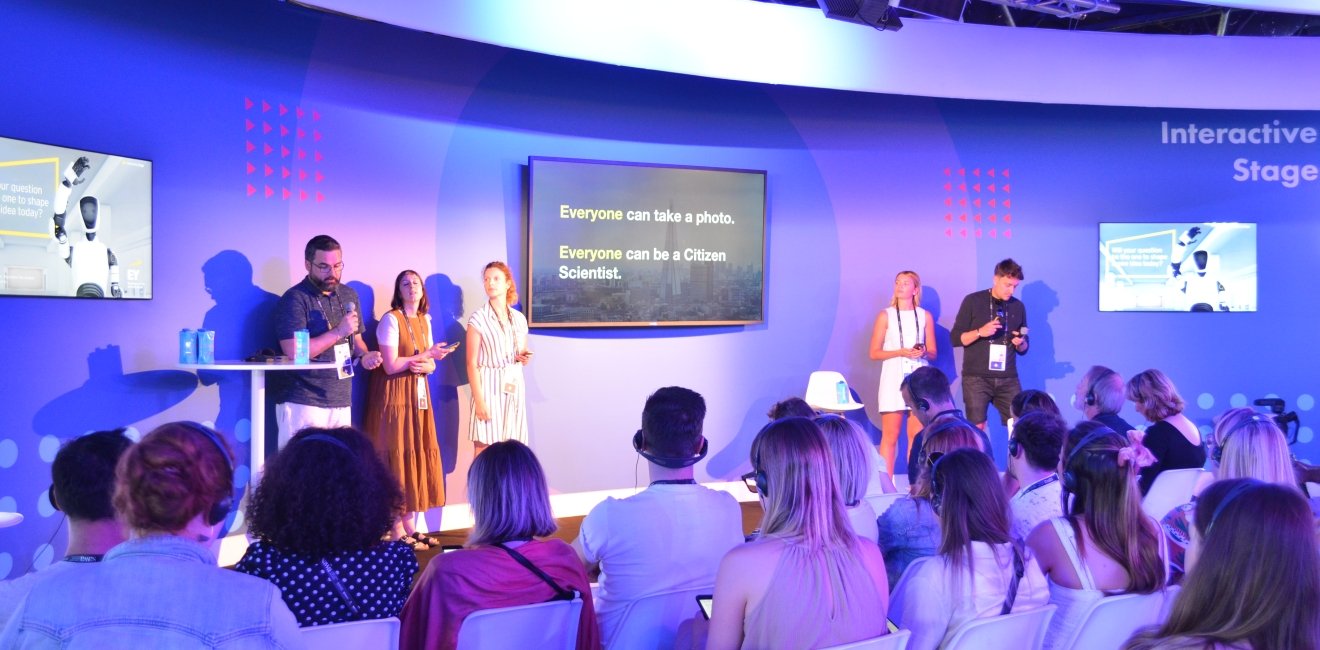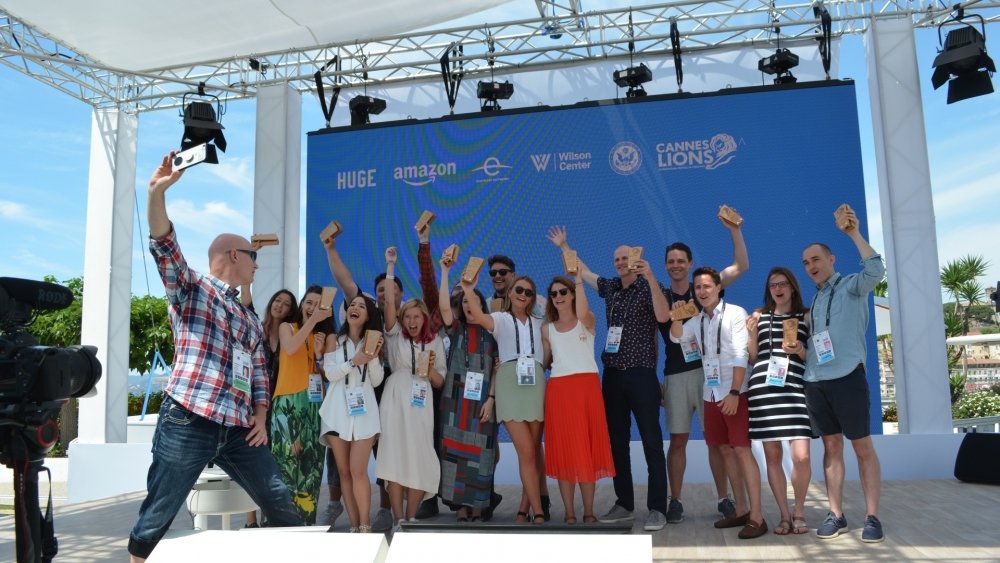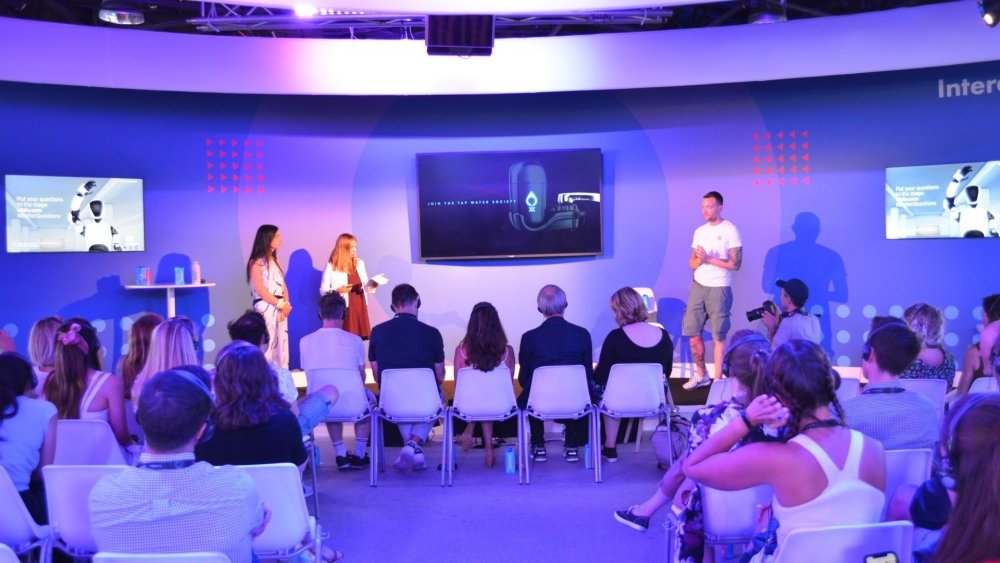The Creative Community and Tools for Science
What happens when you ask six teams from advertising agencies to tackle big environmental questions using new tools for science? What happens when you ask them to do it in 48 hours?

A blog of the Science and Technology Innovation Program
What happens when you ask six teams from advertising agencies to tackle big environmental questions using new tools for science? What happens when you ask them to do it in 48 hours?

What happens when you ask six teams from advertising agencies to tackle big environmental questions using new tools for science? What happens when you ask them to do it in 48 hours?
The result is new, creative ideas for engaging people around the world in collecting data on their environment, like a completely customizable set of sensors for your garden -- housed in a customizable garden gnome -- to collect data on air, water, and soil quality, and a user-friendly water quality test kit that uses Alexa voice recognition technology to guide data collection and communicate information about drinking water quality to anyone that’s interested.
The reality-show atmosphere of the Change for Good hackathon and the extravagance and energy of the Cannes Lions Creative Festival led to a melding of experience, expertise, and a cross-sector collaboration unlike any other. The upshot was six creative campaigns and technologies for environmental data collection using new tools for science. It demonstrated some of the challenges that come with the democratization of science tools -- like accessibility and cost -- and especially the challenges of collaboration and communication across hugely different sectors and fields.
What’s in my drinking water? How does air quality vary locally? What are the local impacts of climate change? To answer critical questions about human health and the environment relevant to people’s lives, we need both engagement with global citizens around the world and data and information collected at unprecedented scales. More data and information about the environment will help us understand complex environmental issues and inform science-based policy at global and local levels, and engagement with global citizens will bring attention to environmental issues, inspire action, and encourage new and innovative solutions to solve problems. Fortunately, these questions can be tackled with the growing number of tools that are making science more accessible to people around the world.
New tools for science have the potential to greatly expand capacity for both the need for broader engagement and scale of data. More people, especially community members and non-experts, are using innovative, new tools for science like low-cost sensors and open hardware to understand their environment and contribute to scientific research. For example, communities around the world are using low-cost air quality sensors to investigate the impacts of pollution on their air quality, and others are responding to environmental disasters using tools like Public Lab’s balloon mapping and MapKnitter open source software.
Although these tools are becoming cheaper and more widely available, there are many conceptual and practical barriers related to the kind of cross-sector collaboration needed to develop, share, and use these tools to answer critical questions about environmental and human health. In this blog post, we explore how the Change for Good hackathon demonstrated some of these barriers. We also show how this kind of cross-sector collaboration can bring new ideas and opportunities to everyone involved.

How can new tools for science contribute to answering big environmental questions? How can we gather data on a global scale to contribute to critical questions about human health and the environment? We brought these questions and a request for new tools and campaigns to the creative community as the client for the Change for Good hackathon -- hosted by Amazon and Huge at the creative marketing industry’s premier event, the Cannes Lions Creative Festival in Cannes, France. Our work with the Change for Good hackathon allowed us to explore why -- and how -- people in the creative and private sector communities see the opportunities and limitations of these new tools for science, and how the creative and scientific communities approach collaborating with one another on these kinds of challenges.
In collaboration with Amazon, Huge, Earth Day Network, and the State Department -- and as described by our partners at Earth Day Network in a recent blog post -- we challenged teams from creative and marketing agencies around the globe with ideating and creating technical solutions and complementary creative campaigns. These campaigns mobilize global citizens to contribute to, understand, share, and take action on data to tackle some of the world’s most pressing environmental challenges related to drinking water, air quality, climate change, insect populations, plastics pollution, and food sustainability. More than 45 teams submitted applications to participate, and six teams were chosen to develop and implement their ideas over the course of five days at the Cannes Lion Creative Festival.
After two days of work with advisors and representatives from the core partners, six agency teams presented their ideas to a panel of judges. Of those solutions, three were chosen to participate in a final round of judging: Wunder Canada proposed my water, a user-friendly version of at-home drinking water test kits that uses voice technology to submit data to a global database of drinking water quality. Rehab from the United Kingdom presented the campaign #Theirs to use machine learning to understand air quality from photographs, collected via a social media campaign. Finally, the McCann Worldgroup (Romania) proposed Garden Solutions, a collection of sensors -- housed in a 3D-printed garden gnome -- designed to improve the user’s gardening and habitat for insects while collecting data on soil, air quality, light, and humidity.
Our experience with agency teams and the creative community throughout the Change for Good hackathon transformed the way we think about marketing, the creative community, and new tools for science. Advisors, judges, representatives of the core partners, teams, and organizers all walked away from the event inspired by the potential for this kind of unique collaboration to change the way we think about science and the environment. It inspired us to think more creatively about new and effective ways to connect with the public. This hackathon demonstrated the value that marketing can bring to citizen science and environmental campaigns, by designing effective ways to engage and communicate, and by adding aesthetic and pop-culture appeal.
At the same time, we encountered some challenges. Some -- like cost and accessibility -- related specifically to the use of new kinds of tools for a large scale environmental campaign. Others were indicative of broader challenges in cross-sector collaboration, like the challenge of introducing teams to entirely new research areas and the specific technical expertise needed to pursue this kind of work.
Teams experienced barriers in balancing the cost of including sensors and other tools for data collection in their solutions. Although we emphasized the benefits of using sensors and other tools for science throughout the challenge, the use of a specific kind of tool was not required; therefore, three teams opted for app-based solutions for data collection. One reason for this may have been the cost of including any kind of non-app-based sensor or tool -- even though it was relatively low cost -- in such a large scale campaign with a strong focus on accessibility. Moreover, the judges appeared to favor the app-based solutions because they appeared to be more accessible to a broader range of users. Interestingly, accessibility was also a key theme in Wunder’s my water solution, which recognized the opportunity to innovate around making the instructions in drinking water test kits more accessible and easier to execute (e.g., by using Amazon’s Alexa technology to time different stages of chemical analysis).
The three teams that chose to focus on app-based technologies for data collection -- including the winning campaign #Theirs -- all focused on photography and image sharing as the primary means of data collection. The appeal of images was clear; images are easy to collect and share, they are already a fundamental part of social media, and they contain a great deal of information that could be leveraged for a variety of uses. A question heard throughout the hackathon was “what useful data can we get from images?”
Despite technical expertise, the teams had largely no experience with the development of technologies like sensors and test kits. A major challenge was the specific technical expertise needed to build and use these tools in a large scale creative campaign. To meet that challenge, we provided teams access to sensor experts as consultants and advisors as well as sample devices. At the same time, we discovered that even more access to that kind of expertise would be useful, for example by bringing in sensor or hardware experts as team members rather than consultants to provide more consistent expertise throughout the process. To facilitate engagement with new tools for science beyond isolated events, community support structures such as conferences, informal meetings and mentorship networks likely play an important role for “on boarding” prospective community members and collaborators.

The largest challenge going into the Cannes hackathon was team preparation; although agency teams were required to include team members with specific expertise, the groups had largely no background in environmental data collection, citizen science, and low-cost and open source hardware. To rapidly bring teams up to speed with current work, we co-created a “science, citizen science, and tools for science” briefing. This briefing was created with extensive input from experts in citizen science and environmental research in areas related to each of the six research questions; this briefing introduced teams to the six research questions, the current status of each in the environmental research community, the current state of supporting technology and tools, an awareness of relevant projects in the global citizen science and open hardware communities, as well as some gaps and potential opportunities towards addressing these critical questions. This briefing increased the teams’ general knowledge base and understanding of these areas. Despite the teams’ lack of prior experience with environmental research, citizen science, and tools for science, their performance during the hackathon indicated a remarkable development in their understanding of these environmental topics, the motivations and goals of citizen science, and the potential of low cost tools to mobilize global citizens to contribute to, understand, share, and take action on environmental challenges.
Despite the major challenge of bringing six teams up to speed in six complex research areas, including knowledge and access to entirely new communities of practice, we were impressed with the level of understanding that teams demonstrated with their solutions. All six teams proposed solutions that would progress global research and fill data gaps, and all six teams demonstrated an understanding of the concept and values of citizen science and the environmental movement. In this case, the investment required to bring participants from a new sector into the citizen science space was more than worthwhile because of the benefits gained via their creativity and expertise. Future work in environmental data collection campaigns should address the opportunities for making tools more accessible by investing in cross-sector collaboration, for example by developing content explaining the value of tools to non-technical audiences, or by using communication strategies like voice, video, or storytelling to explore the use and value of a particular tool.
As new tools for science continue to be created, shared, and used, efforts to overcome the challenges of cross-sector collaboration will enable new and creative voices to contribute to solving environmental issues, further democratizing environmental data collection and allowing more people around the world to participate. In the words of the McCann group, one of the hackathon teams in the Change for Good festival, “this is what we actually want to do: have citizen science become pop culture.”


The Science and Technology Innovation Program (STIP) serves as the bridge between technologists, policymakers, industry, and global stakeholders. Read more
